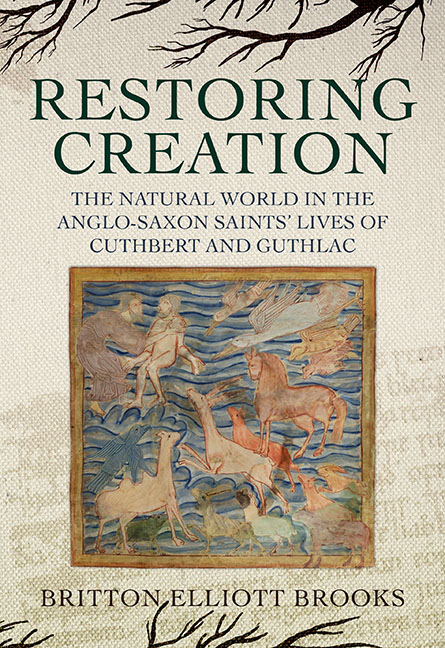 Restoring Creation: The Natural World in the Anglo-Saxon Saints' Lives of Cuthbert and Guthlac
Restoring Creation: The Natural World in the Anglo-Saxon Saints' Lives of Cuthbert and Guthlac Published online by Cambridge University Press: 18 September 2019
FELIX'S Vita Sancti Guthlaci (VSG) is more indebted to hagiographical convention than most antecedent and contemporary saints’ lives, to the extent that Cubitt argues ‘it is almost entirely a textual confection, created from a modicum of personal recollection and much hagiographical borrowing’. While little is known about Felix himself, the breadth of his education, evidenced in these wide-ranging sources, is clear and strongly suggests he was a monk, or a cleric familiar with monastic life. The VSG is also one of the few Anglo-Saxon hagiographies written not at the request of a specific monastic house or ecclesial figure, but instead for a royal patron, the East Anglian King Ælfwald. This focus suggests that Felix was likely writing in East Anglia. While Felix's intended audience for the VSG beyond Ælfwald is uncertain, the complexity of its depictions and hagiographical references points to a specialised and educated audience, whether monastic or aristocratic. The most recent editor of the text, Bertram Colgrave, persuasively argues for a date between 730 and 740 for the composition of the VSG. While the VSG itself is dense with neologisms, allusions to hagiographical precedent, and lexical echoes of classical authors like Virgil, one of its most striking features is the level of descriptive detail in its depiction of the East Anglian fens and the eremitic site of the island of Crowland. Scholarly engagement with these depictions has been wide ranging, most recently in Estes's Anglo-Saxon Literary Landscapes. Estes argues that the depictions of fens in Anglo-Saxon texts more broadly, usually described as ‘wildernesses’, are cultural constructions of those areas ‘as seen by people who lived elsewhere’. Felix's VSG presents a divergent case, however, as both he and his patron would likely have had first-hand knowledge of the East Anglian fens. The VSG's descriptive detail, therefore, requires a different kind of analysis.
To save this book to your Kindle, first ensure [email protected] is added to your Approved Personal Document E-mail List under your Personal Document Settings on the Manage Your Content and Devices page of your Amazon account. Then enter the ‘name’ part of your Kindle email address below. Find out more about saving to your Kindle.
Note you can select to save to either the @free.kindle.com or @kindle.com variations. ‘@free.kindle.com’ emails are free but can only be saved to your device when it is connected to wi-fi. ‘@kindle.com’ emails can be delivered even when you are not connected to wi-fi, but note that service fees apply.
Find out more about the Kindle Personal Document Service.
To save content items to your account, please confirm that you agree to abide by our usage policies. If this is the first time you use this feature, you will be asked to authorise Cambridge Core to connect with your account. Find out more about saving content to Dropbox.
To save content items to your account, please confirm that you agree to abide by our usage policies. If this is the first time you use this feature, you will be asked to authorise Cambridge Core to connect with your account. Find out more about saving content to Google Drive.